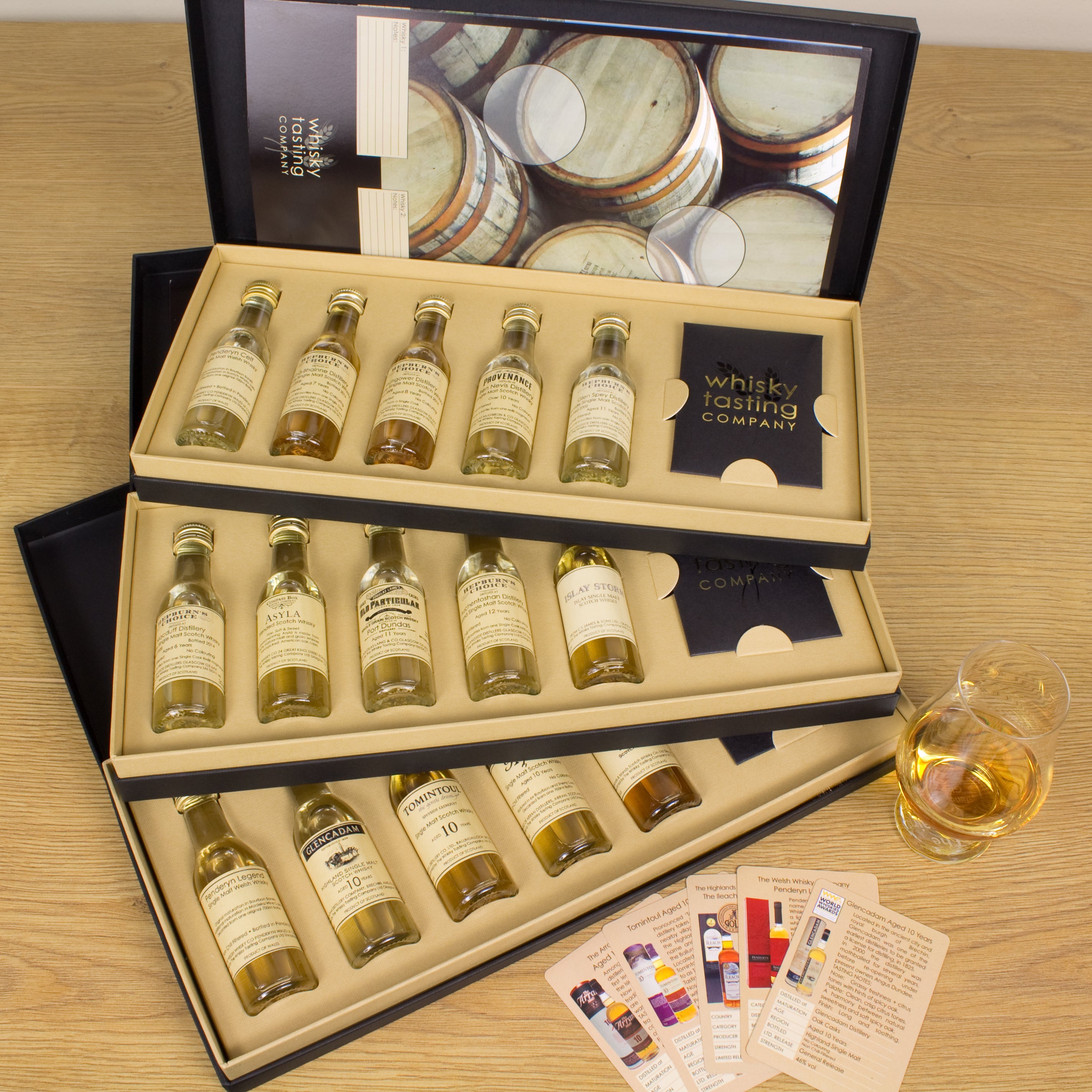Whisky myths debunked: separating fact from fiction
Myths spread like wildfire disguised as truths, and before you know it, it’s hard to distinguish fact from fiction.
Like many things, whisky has its fair share of myths that have astounded whisky enthusiasts; many people still believe the misinformation to this day. We’ve come to set the record straight.
Today, we’ll address common myths and misconceptions, from those that stump beginners to the ones that catch out even the most advanced whisky drinkers.
While some of these are harmless, they can deter people from expanding their palates or continue to reinforce lies about whisky culture.
Myth #1: Older whisky is always superior
One of the most common myths surrounding whisky is that the older it is, the better it tastes. This is simply untrue.
While yes, whisky can get better as it ages, it’s not a concrete fact for all types of whisky. Age isn’t everything. It’s one piece of the puzzle when it comes to whisky production—and sometimes, it's not even the most important one.
Every whisky peaks at a certain point of ageing in barrels, and being left for longer can actually diminish its quality. The type of oak, the liquid it previously held, how many times it’s been used, the size, and the char level all have a massive impact on the taste of whisky.
This myth has been influenced by the fact that older whiskies cost more due to the expenses associated with maturation. So the next time you see a 21-year-old bottle next to a 10-year-old and think, ‘That must be the good stuff,’ remember this article.

Myth #2: Whisky should always be consumed neat
This is more a matter of preference than anything else. Although people may take their opinions as law, there’s no ‘correct’ way to drink whisky.
The idea that whisky should be consumed neat is outdated and mostly targets Scotch whisky drinkers. Many people believe that drinking whisky with water, ice, or mixing it into a cocktail is somehow disrespectful to the spirit and ruins the drinking experience.
In fact, it’s quite the opposite. Adding a drop of water, ice, or a mixer can actually open up the aromas and make the underlying flavours more pronounced. Whisky is meant to be enjoyed, whatever way works best for you.
Tip: If you’re worried about over-dilution, try whisky stones or large-format ice.
Myth #3: Darker whisky indicates higher quality
If you’ve ever stood in the whisky aisle analysing the colours for the bottle that looks the best or richest, then you’re not alone.
While we wish it were that easy, colour alone can’t indicate how good a whisky is—judging a whisky by its shade is like judging a book by the font on the cover (it won’t get you anywhere!).
Whisky gets its colour from the casks it matures in, as it absorbs pigment from the wood. Sherry casks tend to provide a deep, rich gold or red colour, while bourbon casks produce a lighter golden whisky.
However, there’s no way to control how dark the whisky goes, which is why some producers use caramel colouring (E150a). All in all, the cask, spirit, time, and warehouse climate all indicate quality more than the colour.

Myth #4: Whisky was invented in Scotland
This myth is still widely believed across the world. There’s no doubt that Scotland has perfected the whisky branding and globalised it on a large scale, but it didn’t quite start there.
The earliest written mention of whisky in Scottish history comes from 1494, in the Exchequer Rolls. A monk named Friar John Cor was given enough malt to make 500 bottles of “aqua vitae”.
However, the invention was already soaring in Ireland 90 years earlier, in 1405, after Irish monks brought the knowledge of whisky distillation to Europe around the 6th century. This is most likely when the idea for experimenting with grains was born.
While Scotland and Ireland fight for the claim of whisky, there’s good evidence to suggest it was already founded during ancient Mesopotamia, when alchemists used whisky for medicines and perfumes.
Myth #5: Scotch whisky is made with soft water
This myth has taken whisky forums and discussions by storm for years, yet it’s simply misinformation.
While some whisky brands, such as Macallan and Glenfiddich, use soft water during the production process, plenty of distilleries still use hard water.
“Soft” water is low in minerals like calcium and magnesium, while “hard” water has more of those dissolved minerals. In theory, the former is better, as it doesn’t interfere with the flavours.
However, most whiskies are made using hard or mineral-rich water. While the water used has little effect on the flavour—or not as much as the yeast, malt, peat, and cask—hard water can help with the mashing process by extracting sugars from the barley more efficiently.
Whether hard or soft, any subtle differences from water minerals are long covered by layers of flavour from oak, time, and distillation techniques.

Myth #6: Whisky keeps ageing once bottled
Unlike wine or certain types of beer, once the whisky is bottled, it unfortunately (or fortunately) won’t continue to mature.
We’re sorry to be the bearer of bad news, but if you bought a 10-year-old dram, when you open it two years later, it’ll still be 10 years old. Whisky only matures in the barrel, where it interacts with the wood and the air over time.
However, that’s not to say that whisky can't change over the years, because it can. The way you store your whisky can have a great effect on its quality, so it’s best to follow our blog on how to store whisky so you don’t accidentally ruin the flavours.
Myth #7: Single malt means it comes from a single barrel
We can see why people would get confused over this one, but its name actually has nothing to do with how many barrels it's aged in.
So, what does single barrel actually mean? Let’s break it down:
-
Single = It comes from one distillery. It doesn’t mean one barrel, one bottle, or one batch.
-
Malt = It’s made using 100% malted barley. No corn, no wheat, no rye—just malted barley.
Therefore, single malt whisky is just whisky that comes from one distillery and is made from malted barley and water. A single malt can contain various casks from the same distillery, mixing different ages and finishes for a delicious blend.

Myth #8: The water source greatly impacts the whisky
This carries on from our previous discussion of the hard and soft water debate.
While some people may talk about the water used for whisky as if it’s some integral cog in the whisky machine, they’re simply leading you on.
Yes, water is important in every aspect of whisky making—from the mashing to fermentation and dilution—but does the specific source of water change the taste? No. Water plays a role early on, but the ingredients and distillation process, length of ageing, and cask type all determine the taste.
Any ‘pure’ water sources are filtered and treated before they’re used for a predictable and consistent outcome. Some distillers simply favour soft water, as hard water tends to build up limescale in pipes, making it harder to maintain.
Myth #9: Scotch whisky has to be aged in specific barrels
There’s a popular belief that Scotch whisky has to be aged in sherry casks or bourbon barrels.
While there are some legal requirements surrounding the production of Scotch whisky, the rules regarding barrels are a little more lenient than you think.
The spirit must be aged in oak casks in Scotland for a minimum of three years, but there’s nothing to say about the type of cask that should be used. This means distillers can choose anything from sherry to port or whisky barrels—the choice is theirs!
People simply believe this to be the case because sherry or bourbon casks are the most popular and accessible options.

Myth #10: Peaty whiskies are always smoky and intense
Yes, peaty whiskies have a reputation for burning your taste buds and making your eyes water, but they’re not all like that (we promise).
Sure, some peaty whiskies, like Laphroaig, are known for blowing your socks off, but you can also get whiskies that are gently smoky, with floral or earthy undertones.
The intensity of the flavour depends on a few things:
- How long the barley was exposed to it
- How much peat smoke was used to dry the barley
- Whether the distillation method highlights or softens the peat
- The type of peat used
- How long the whisky is aged for
Areas like Speyside or Lowlands often produce whiskies with hints of vanilla or sweet fruit.
Discover the beauty of whisky from home
Separate the myths from the malts with your very own whisky tasting kit delivered straight to your door.
Our luxurious tasting sets are perfect for a relaxed night in or expanding your whisky palate. It’s a great and affordable way to build upon your collection.
Plus, we have a range of expertly curated whisky gift sets for every occasion. Don’t miss out on your chance to discover your new favourite drink from the comfort of your home.





